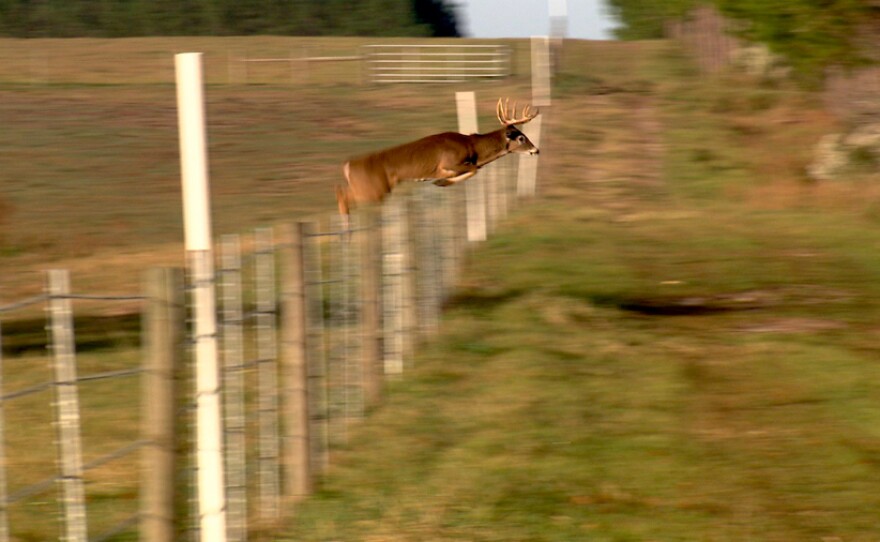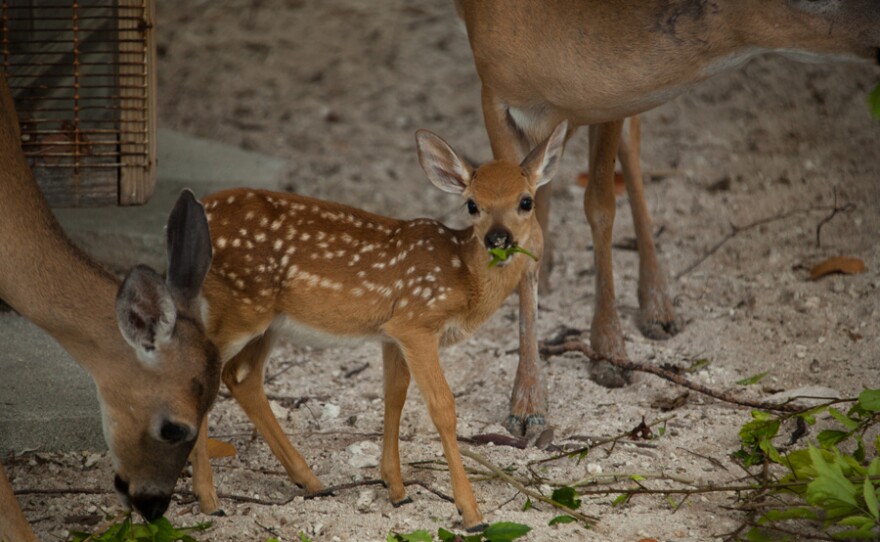Whitetailed deer seem to be always around us, whether they’re grazing alongside our roadways, feasting on plants in our backyards or darting into the woods, though these “neighbors” do like to protect their privacy. But if it seems as though we are seeing more whitetails these days, there’s a good reason. Just a century ago, there were less than a million deer in North America. Today, there are nearly 30 million.





How these wild deer interact with one another and how they adapt to living in a suburban environment is demonstrated in NATURE’s "The Private Life of Deer." After broadcast, the program will stream at pbs.org/nature.
While other species may be negatively impacted by human development, it is just the opposite for the whitetails. “We as humans have created pretty much the perfect habitat for deer,” explains Cornell University’s Jay Boulanger. “These are areas that have a wide diversity of plants that deer can eat, versus, say, a rural forest.”
Whitetail need to consume up to seven pounds of food daily and will eat practically anything, which frustrates backyard gardeners. Fences aren’t much of a deterrent as these nimble creatures can jump over eight foot obstacles.
To document the daily behaviors of their four-legged neighbors, a number of residents in Cayuga Heights, N.Y. were given cameras by the filmmakers. These homeowners in central New York captured footage of whitetails bedded down in backyards after eating. But while it appeared they were just resting, the deer were actually digesting. As their coloring provides the perfect camouflage, they also like to hide in a thicket of branches to digest in private.
Whitetailed deer are creatures of the dawn and dusk, most active during the early morning or late afternoon when they’re feeding, a behavior known as being crepuscular. It’s during these shadowy hours when their sensitive vision works best.
All these deer can usually make out is movement, making them nearly blind by human standards, though their hearing and sense of smell are quite acute. Light shining in their eyes actually overwhelms their visual cortex and locks down their brains for a short period of time, freezing them in their tracks, which explains the famed “deer in the headlights” effect.
Footage from cameras a researcher placed on wild deer showed more social interaction than was expected. The deer sniff each other when they meet to determine age, sexual status and family group, and groom each other not just to remove parasites, but also to reinforce social bonds. An especially surprising discovery was conflicts between females, the same type of antagonistic behavior displayed between males especially during breeding season.
Isolated on islands in the Florida Keys, adorable and endangered Key deer, described as whitetails in miniature, adapted to their habitat by getting smaller. They are a favorite of the locals who feed them, though their kindness also puts the deer at risk of being hit by vehicles in residential neighborhoods.
But the rarest of whitetails is notable for its color, not its size. Sightings of legendary white ghost deer – albinos – have enthralled those who have caught a glimpse. These exceptional deer truly live a private life in the northern Wisconsin woods.
NATURE is on Facebook, and you can follow @PBSNature on Twitter.
The Private Life of Deer Preview
"Despite the presence of white-tailed deer in our lives
Making The Private Life of Deer
"Producer Kevin Bachar on how the filmmakers of "The Private Life of Deer" tracked and filmed populations of whitetailed deer in the suburbs of New York."




















